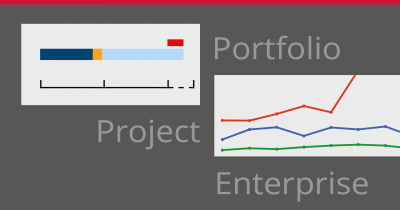The overhead rate affects the company perhaps more than you think. In this article, we will look at a few effects that are associated with its setup.
Navigo supports the dissolution of the company’s overhead costs into individual projects in the form of an overhead rate. However, what all is included in the overhead rate may not be obvious at first glance. And how fundamentally its value can affect the performance of the company, let alone the company’s performance. Yet it can, and fundamentally!
This article is suitable not only for corporate executives, but also for any worker who likes to think in a broader context at work.
The meaning of the overhead rate
Overheads are company costs that are not directly related to projects. For example, rent of premises, energy, investment in tools, salary of the director, HR and secretary, coffee in the kitchen, etc.
If the projects only involve the salaries of the employees involved and external costs (subcontracting), the results look great. Traders can then sell projects cheaper than their competitors. The company’s profit from each project seems to be sufficient. Everyone is proud and happy.
This lasts exactly until the economic results of each project are added up over a period (month, quarter, year) and the overhead is deducted. The results are often poor. Unfortunately, this math usually shows up out of sight of regular employees. That’s why project managers can also get frustrated: ‘ All my projects are profitable, my colleagues are the same, and you tell me we’re losing money!’
The purpose of the overhead rate is to avoid this situation. Take all of the company’s monthly overhead costs and divide them by the number of hours employees report for projects. Each hour of work is thus burdened with a small piece of overhead corresponding to the fact that the employee has a place to work, is warm, can go to the toilet, has working tools,… This brings the cost of the project closer to the real cost of the company for it. The result of all projects is close to the actual profit the company makes from them. And at the same time it corresponds to the company’s profit – that is, if you deduct all possible loss-making projects that need to be rehabilitated…
Trading
For traders, it is better to keep the overhead rate as low as possible. The project managers use it as a basis for the preliminary project budget, the merchant throws in a reasonable margin and sends it to the customer. He will definitely choose our offer because it is the lowest. Great work, the company is swamped with orders! The project manager then manages the project well and maintains the margin. Wow, those are going to be Christmas bonuses! Unfortunately, it will be discovered before Christmas that there will be no bonuses, because the margins from projects sold too cheaply cannot cover the company’s costs. The mood in the company is going downhill.
If the rate used is closer to reality, traders will sweat more and many projects will not even be acquired. And that can be a good thing! What is the point of working on projects that are already known to be loss-making at the time the contract is signed? No.
If, on the other hand, the overhead rate is too high, it is possible that traders will not be able to bring work to the company. However, if the overhead rate corresponds to reality, then the company has no choice but to start saving on overhead .
Influence on planning
The correct value of the overhead rate will also be reflected in the planning,. This is especially important if you have a fixed price from the customer that you have to fit into. This way, you already know how many hours of work are available before the project starts. And what if it’s less than you need?
It is foolish to think that a project that requires 100 man-days of work can be completed in 50 days. However, I am convinced that it can usually be done in 80 or 90 days if this limitation is known in advance. Project managers and executives know best where time can be saved without compromising the overall quality of the project. So if they have enough information right from the start of the project, they will definitely come up with a way. The result will not be perfect, but just good. And that’s usually enough.
It is just necessary that the employees concerned have sufficient information for their decision-making at all times and in good time . And that includes accurate information on what the overhead rate is. So don’t be afraid to set the overhead rate realistically and let the whole company live with it on an ongoing basis. There will be many small decisions made by employees during the year that will be made in the right context thanks to good information. It’s definitely a better option than a surprise at the end of the year.
What is directing?
I mentioned above what typically counts as overhead. But is that all? However, there are items that are often not included in the overhead up front: employee bonuses, investments, training, etc. These expenses are usually dealt with only when it is certain that the company has generated a profit.
But it is precisely these items that make an ordinary company great and an ordinary employer great. Wouldn’t it be worth targeting them all year? Because if you include them (at least partially) in the overhead rate, then you are actually telling all employees: “If you can keep your projects profitable even with this increased overhead rate, then at the end of the year you will get a bonus and we will be able to afford to buy you new tools, improve the environment, …”
Be open and your employees will understand.
Conclusion
The overhead rate is just one of many parameters of managing a project company, but as you can see, it can have far-reaching consequences on its operations.



